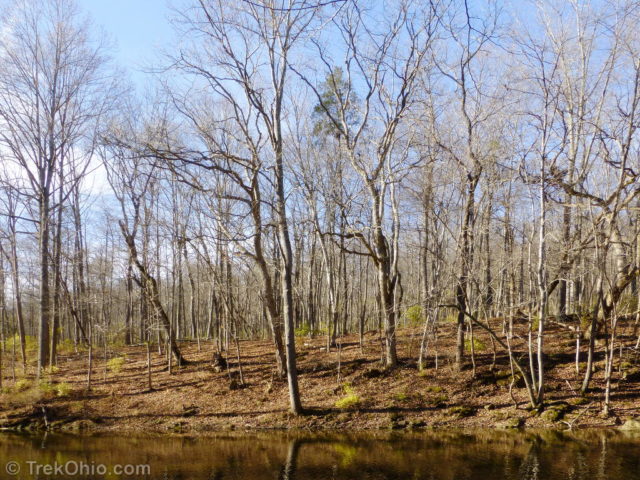Two thousand years ago, the Hopewell people built a massive earthwork enclosing a 40-acre hilltop in southwest Ohio. This earthwork which resembles a fort was later dubbed Fort Hill.
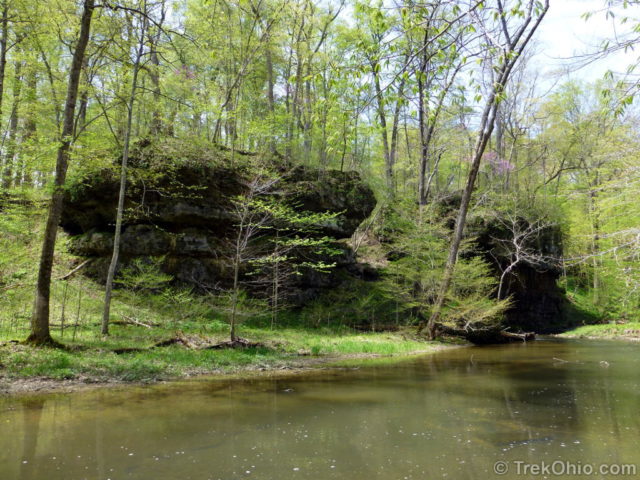
Hiking the Parks & Preserves of Ohio
Fen habitats are America’s most diverse habitat for vegetation, and many rare plants are found in fens. A fen is a type of wetland formed when water bubbles up from an underlying aquifer via an Artesian well or seep. In the case of Gallagher Fen, the water emerges from a hillside seep because two aquifers intersect nearby increasing the underground water pressure. Since the water is emerging from deep within the earth through limestone gravel dumped by glaciers during the last Ice Age, the water is very alkaline and very cold, about 56 degrees year round.
Although it is a wetland, it is difficult for many plants to absorb the very cold water. So ironically drought-tolerant prairie plants thrive in fen meadows. Many of the plants found in local fens moved into the area when there were glacially fed lakes in Ohio. As the glaciers retreated these plants were unable to tolerate the warmer weather, and they disappeared from Ohio, but pockets of them remained in these scattered fens. Outside of Ohio’s fens you would have to go to northern habitats like northern Michigan or Minnesota to find other representatives of these plant communities.
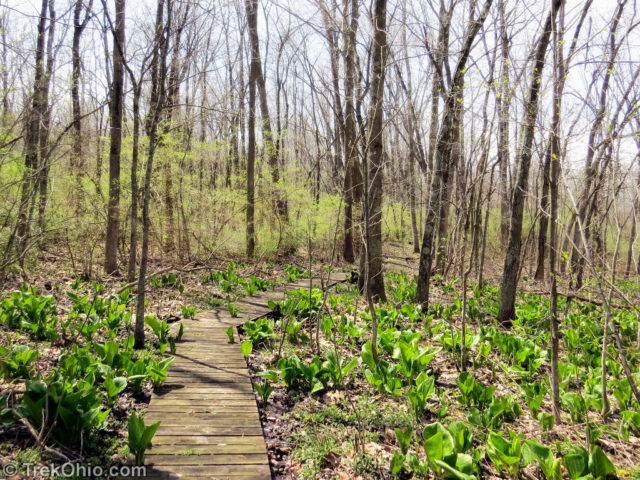
Glen Helen began when alumnus Hugh Taylor Birch donated a wooded glen to Antioch College in 1925 in memory of his daughter, Helen. The college continued to acquire adjacent land over the years, and the Glen Helen Nature Preserve now encompasses 1000 acres and 25 miles of hiking trails. The preserve is managed by the Glen Helen Ecology Institute. Within the preserve there is a yellow spring that has given its name to the town where the college and preserve are located. The preserve also includes limestone cliffs, waterfalls, 400-year old trees, 69 species of wildflowers, 153 species of birds, a Hopewell Indian mound and much more.
At a separate entrance to the preserve there is a Raptor Center that admits about 150 to 200 injured birds per year. The Raptor Center is able to rehabilitate about half of these birds to the point where they can be released back to the wild. Birds that are permanently handicapped live in large, outdoor cages on the premises.
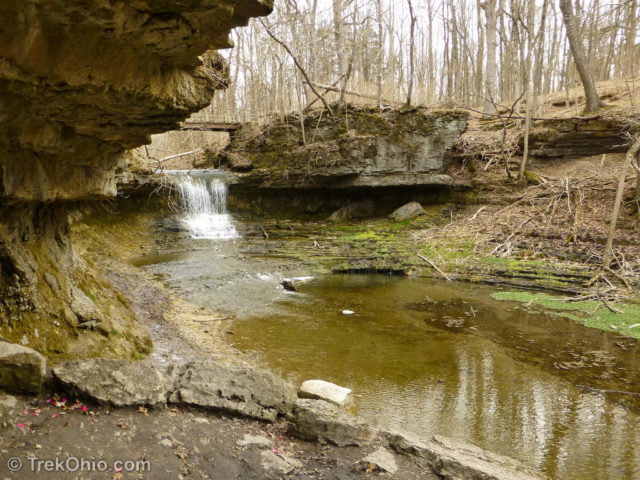
I was delighted at how many species of wildflower were in bloom at Fort Hill this past weekend. We saw many of the same flowers that appeared in April Wildflowers at Lake Katharine State Nature Preserve. So rather than posting duplicate flower photos, I’ll just post ones that were newly seen at Fort Hill.
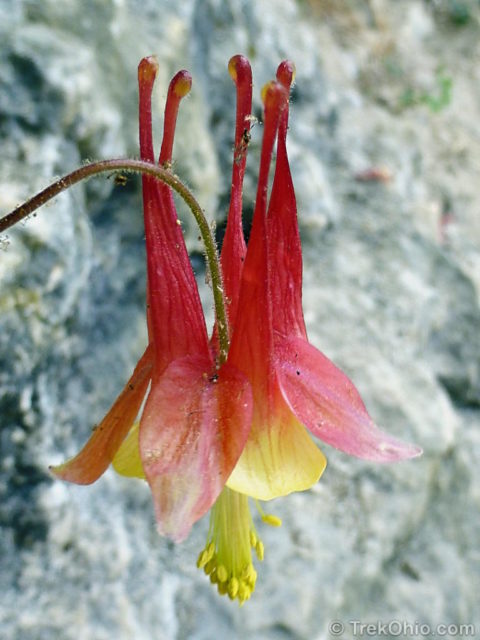
Located in Franklin and Delaware counties, Highbanks Metro Park is 1,159 acres in size with over 10 miles of hiking trail, including a 3.5 mile, mowed path that’s available for dog walking and cross-country skiing. The park is bounded on one side by the Olentangy River, and it’s crisscrossed by small streams flowing in ravines.
One of our favorite attractions is an observation deck that’s perched on a shale bluff 110 feet above the Olentangy river. For a number of years a pair of eagles have nested in a large sycamore tree just upstream from the observation deck. We’ve watched from the deck as an eagle flew over the river beneath us. If you direct your attention upstream, you can often spot an eagle perched on a tree on either side of the river. The eagles have become the park’s most famous residents. It’s easiest to catch sight of them before foliage appears on the trees, and for a better view I recommend bringing binoculars, or a spotting scope.
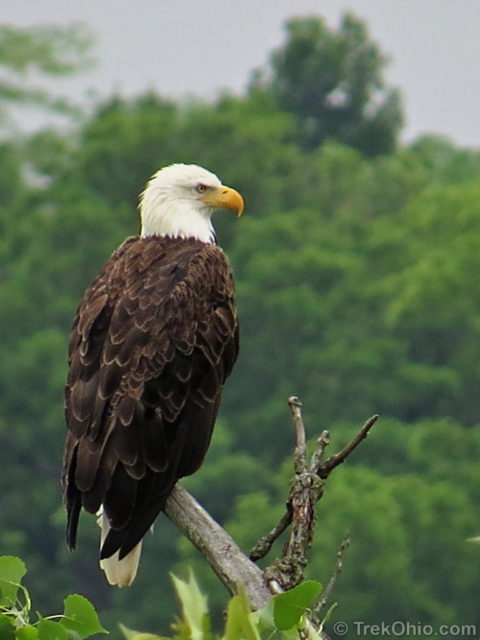
A short while ago I did a post on the Mourning Cloak butterfly. One of the odd things about this butterfly is that it looks like it only has four feet, but it actually has six feet like most insects. It’s just that the front two are tiny, little things that the butterfly holds near its body. Someone thought the fuzzy, front feet looked like brushes, so that’s how an entire family of butterfly species became known as the Brushfoot family. Today I’m going to look at two other species that are members of this same family: the Eastern Comma and the Question Mark. Yes, they are both named after punctuation. We’ll soon see why.
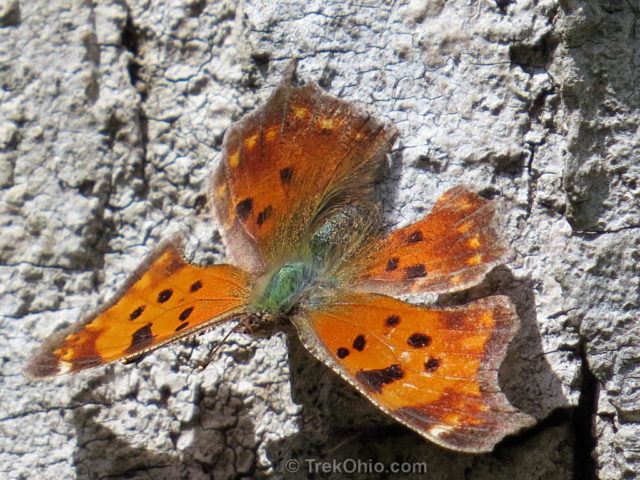
Continue reading “Butterflies that Punctuate: The Eastern Comma and the Question Mark”
There are three trails at Lake Katharine. When we visited mid-April we hiked Salt Creek Trial and then Calico Bush Trail, but we didn’t have time for the Pine Ridge Trail. The preserve struck us as being very scenic, and many spring flowers were in bloom during our visit. The Ohio Department of Natural Resources (ODNR) lists Lake Katharine as being one of the eight best preserves in the state for viewing spring wildflowers. The terrain is also interesting; it features many sandstone cliffs and outcroppings. If you look closely at the sandstone, you might notice round, quartz pebbles embedded within it. These pebbles were smoothed while rolling along the bottom of the ancient Teays River, a river system that was destroyed by glaciation some two million years ago.
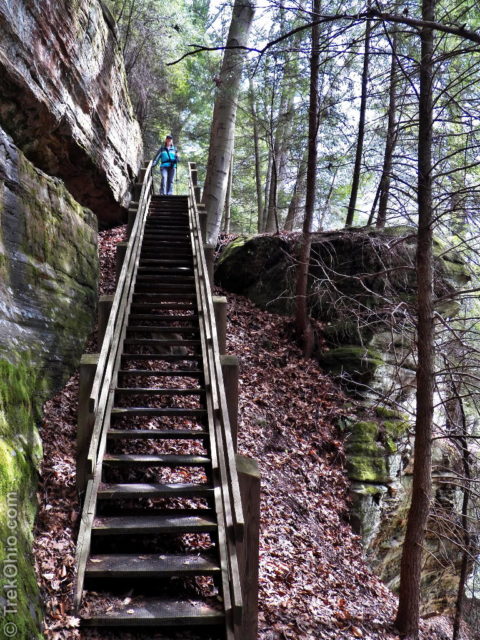
The dining lodge is one of the attractions of Lake Hope State Park. Originally built in 1950, the lodge burned to the ground in 2006. We visited Lake Hope State Parke several times after the lodge was destroyed, and it was a long drive to find a meal. Happily the lodge was rebuilt last year, and it has resumed serving those visiting and camping in the park as well as the local people of Vinton County. People can hire portions of the lodge for gatherings of all sorts, including conferences, weddings, and family reunions.
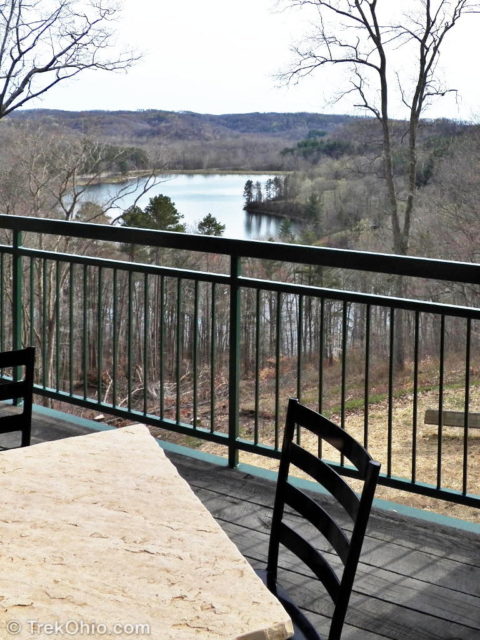
The Ohio Department of Natural Resources lists Lake Katharine State Nature Preserve as being one of the nine state nature preserves in Ohio that are among the best for seeing spring wildflowers. Having never been to this nature preserve in Jackson County, we decided to see what was blooming there in mid-April.
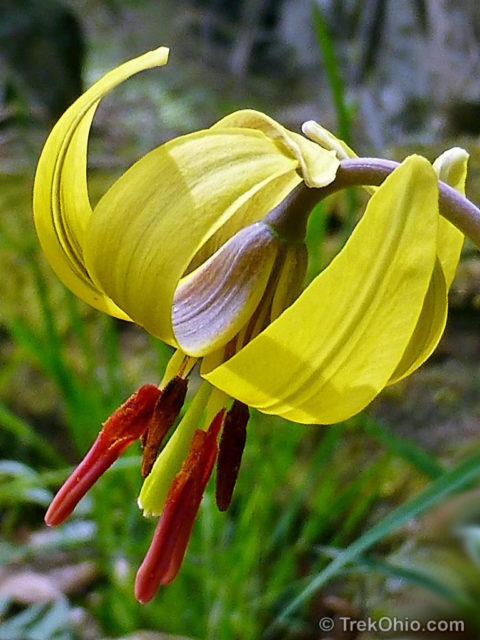
Continue reading “April Wildflowers at Lake Katharine State Nature Preserve”
John Bryan State Park makes a great base for outdoor adventures in Greene County, Ohio. The 752-acre park has 11.4 miles of trail, most of which are adjacent to the Little Miami River. Plus it has an additional 6.5 miles of multi-use trails a short distance from the river that’s open to both mountain bikers and hikers. If hiking and biking isn’t enough fun, the park features one of the state’s few public rock climbing and rappelling areas. And because the Little Miami River runs through the park, it is also a great site for canoeing and fishing. A disc golf course is in the works, but it’s not available as of yet.
